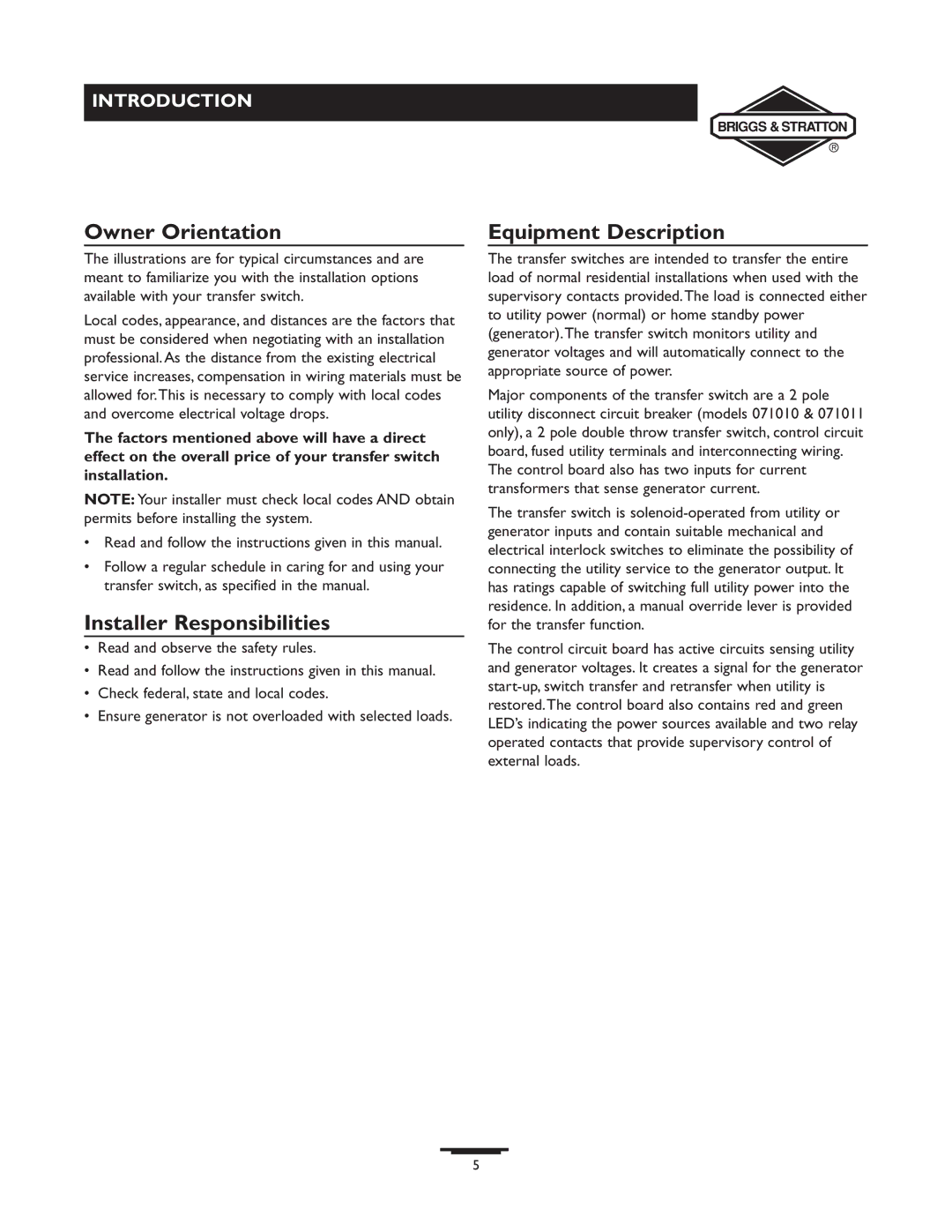
INTRODUCTION
Owner Orientation
The illustrations are for typical circumstances and are meant to familiarize you with the installation options available with your transfer switch.
Local codes, appearance, and distances are the factors that must be considered when negotiating with an installation professional. As the distance from the existing electrical service increases, compensation in wiring materials must be allowed for.This is necessary to comply with local codes and overcome electrical voltage drops.
The factors mentioned above will have a direct effect on the overall price of your transfer switch installation.
NOTE: Your installer must check local codes AND obtain permits before installing the system.
•Read and follow the instructions given in this manual.
•Follow a regular schedule in caring for and using your transfer switch, as specified in the manual.
Installer Responsibilities
•Read and observe the safety rules.
•Read and follow the instructions given in this manual.
•Check federal, state and local codes.
•Ensure generator is not overloaded with selected loads.
Equipment Description
The transfer switches are intended to transfer the entire load of normal residential installations when used with the supervisory contacts provided.The load is connected either to utility power (normal) or home standby power (generator).The transfer switch monitors utility and generator voltages and will automatically connect to the appropriate source of power.
Major components of the transfer switch are a 2 pole utility disconnect circuit breaker (models 071010 & 071011 only), a 2 pole double throw transfer switch, control circuit board, fused utility terminals and interconnecting wiring. The control board also has two inputs for current transformers that sense generator current.
The transfer switch is
The control circuit board has active circuits sensing utility and generator voltages. It creates a signal for the generator
5
